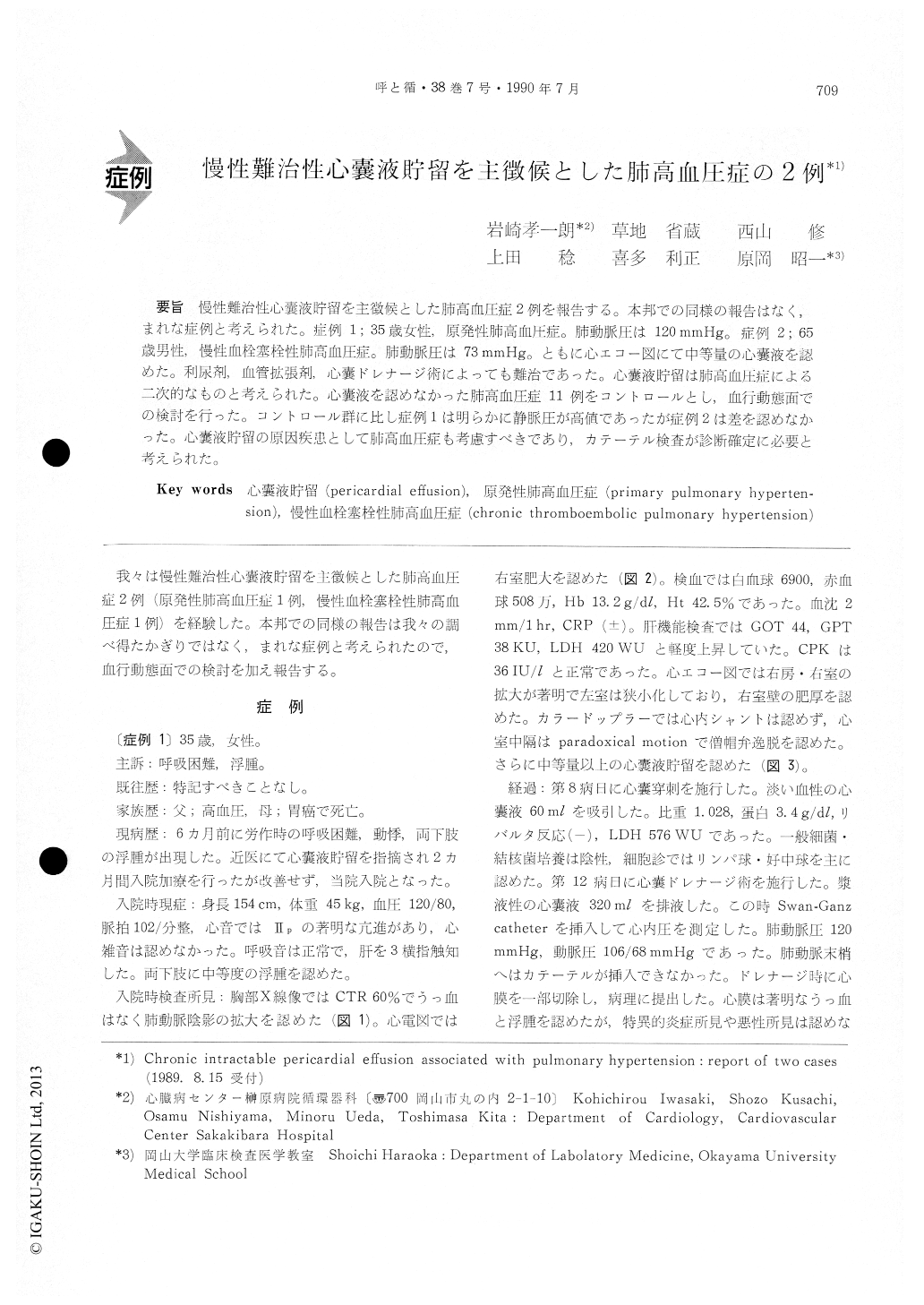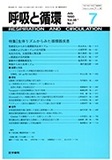Japanese
English
- 有料閲覧
- Abstract 文献概要
- 1ページ目 Look Inside
慢性難治性心嚢液貯留を主徴候とした肺高血圧症2例を報告する。本邦での同様の報告はなく,まれな症例と考えられた。症例1;35歳女性,原発性肺高血圧症。肺動脈圧は120 mmHg。症例2;65歳男性,慢性血栓塞栓性肺高血圧症。肺動脈圧は73mmHg。ともに心エコー図にて中等量の心嚢液を認めた。利尿剤,血管拡張剤,心嚢ドレナージ術によっても難治であった。心嚢液貯留は肺高血圧症による二次的なものと考えられた。心嚢液を認めなかった肺高血圧症11例をコントロールとし,血行動態面での検討を行った。コントロール群に比し症例1は明らかに静脈圧が高値であったが症例2は差を認めなかった。心嚢液貯留の原因疾患として肺高血圧症も考慮すべきであり,カテーテル検査が診断確定に必要と考えられた。
We report two cases of chronic intractable peri-cardial effusion associated with pulmonary hyper-tension.
Case 1. A 35-year-old women was admitted to our hospital because of dyspnea and edema. Chest X-ray examination showed enlargement of cardiac, and pulmonary artery shadow. An electrocardiogram with high voltage of R in V1 and deep S in V5 suggested right ventricular hypertrophy. Pericardial echo-free space with dilated right ventricle was demonstrated by echocardiography. Cardiac cathe-terization revealed an elevated pulmonary systolic pressure of 120 mmHg. No intracardiac shunt was calculated. A diagnosis of primary pulmonary hy-pertension was made. Pericardial drainage dimini-shed pericardial effusion. Soon after discharge, however, pericardial effusion increased and the pa-tient died.
Case 2. A 65-year-old man was admitted because of dyspnea. The findings of chest X-ray and echo-cardiography were essentially the same as Case 1. Pericardial effusion disappeared after pericardiocen-tesis, but appeared again one month later. Cardiac catheterization demonstrated an elevated pulmonary systolic pressure of 73 mmHg. Pulmonary-capillary-wedge pressure was normal. Pulmonary arteriogram showed occlusion of the pulmonary artery trees. A diagnosis of chronic thromboembolic pulmonary hypertension was made. Although diuretics and vasodilators decreased pulmonary-artery pressure, pericardial effusion was unchanged.
We compared these two cases with 11 control patients of pulmonary hypertension without peri-cardial effusion. Venous pressure was higher than that in the controls in Case 1, but not different in Case 2. Thus, venous pressure did not fully account for pericardial effusion.
In summary, chronic pulmonary hypertension should be added to the list of conditions known to cause pericardial effusion. In these cases, echocar-diography revealed important signs, and cardiac catheterization was essential for definite diagnosis. Pericardial effusion associated with pulmonary hy-pertension was refractory to diuretics and vasodi-lators.

Copyright © 1990, Igaku-Shoin Ltd. All rights reserved.


